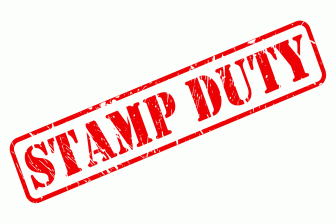 A pair of property buyers have lost a request to appeal against a £19,997 tax bill incurred after using an aggressive tax avoidance scheme to avoid stamp duty
A pair of property buyers have lost a request to appeal against a £19,997 tax bill incurred after using an aggressive tax avoidance scheme to avoid stamp duty
The decision at the First Tier Tribunal to strike out the appeal will have an impact on three other outstanding appeals against HMRC related to demands for unpaid stamp duty gained through a tax avoidance scheme devised by Cornerstone Tax.
In total, up to 750 buyers availed themselves of the Cornerstone scheme, or some variant of it, HMRC told the tribunal, although many users chose to settle their tax bills rather than be pursued for payment after the publication of an adverse GAAR panel ruling in April 2023.
At this point, Goldstone Tax, a company associated with Cornerstone Tax, wrote to users of the scheme recommending that they settle. Although most did, the two appellants in this case, William Robinson and Maria McAllister, disputed the HMRC demand.
They had purchased a house for £599,950 in March 2016 and used the Cornerstone scheme to submit two nil SDLT returns both for zero tax on 6 April 2016. They split the purchase price into two segments, firstly of £491,959 and claimed pre-completion transaction relief (relief code 34), and a second tranche of the transaction at £122,897.
On 6 April 2016, the appellants filed two SDLT returns, one showing the vendors as sellers of the property and Robinson as the sole purchaser of it with a value of the transaction of £491,959 and that the SDLT due was nil due to a claim for pre-completion transaction relief (relief code 34). On a second return, the balance of the transaction price of £122,897 showed the vendors as sellers of the property and the appellants as joint purchasers of it, again with nil SDLT.
HMRC opened enquiries into the return and issued a closure notice on 20 October 2021 assessing the appellants to SDLT of £19,997. But when pursued for unpaid tax, they chose not to settle and decided to appeal to the tribunal to try to get the demand overturned.
The avoidance scheme permitted buyer A to purchase a dwelling from seller B. They entered into an arm’s-length contract (‘the original contract’). Before completion of that contract, buyer A sub sells a proportion of his putative equitable interest in that property to an associated individual, A2. Consideration is given by the provision, by A2, of an annuity. Buyer A then completes the contract with seller B.
Cornerstone had argued that the subsale of the equitable interest was a qualifying subsale under the relevant SDLT legislation. This meant that buyer A could apply for an exemption from SDLT in respect of the original deal with seller B.
A2 was liable to SDLT on the subsale but only on the basis of the annuity which was limited to 12 annual annuity payments, which fell within the nil rate band for SDLT, so no SDLT payable on the transaction.
Tribunal judge Nigel Popplewell said: “We have no hesitation in concluding, and find as a fact, that the scheme had, as its main or one of its main purposes, the obtaining of a tax advantage for the appellants.”
He added “This analysis is, and has always been, wholly wrong. It is clear that there is no technical merit whatsoever in Cornerstone’s analysis nor in the grounds of appeal which were drafted by Goldstone.
“We therefore have no hesitation in striking out this appeal as it has no reasonable prospects of success.”
In response to this article, Cornerstone Tax noted that following the GAAR Panel ruling in 2020, Cornerstone actively advised all its clients not to pursue an appeal and settle. Some clients, however, against Cornerstone’s strict advice, nonetheless pursued.


Comments are closed.